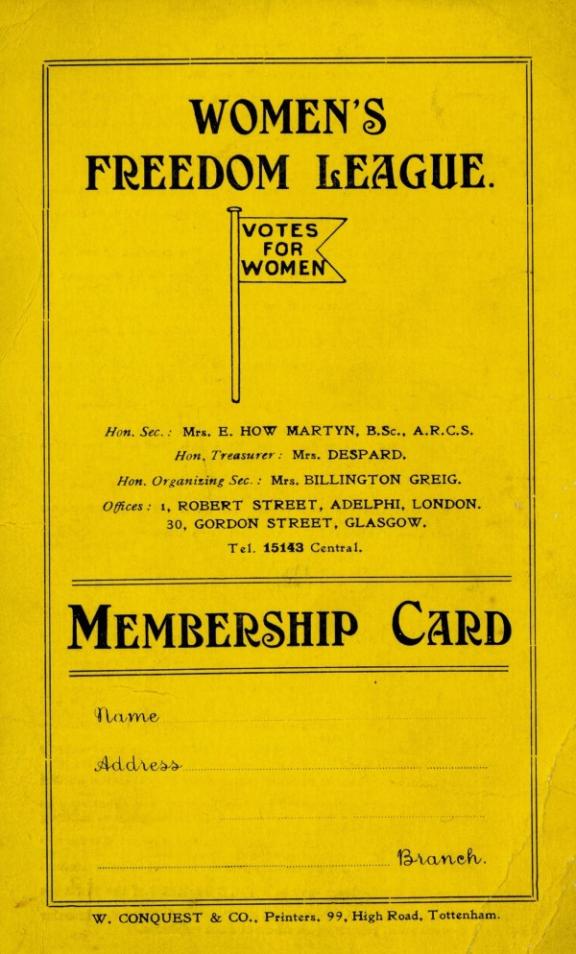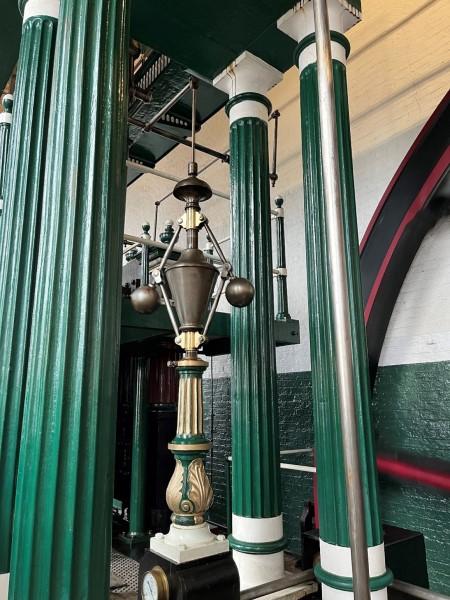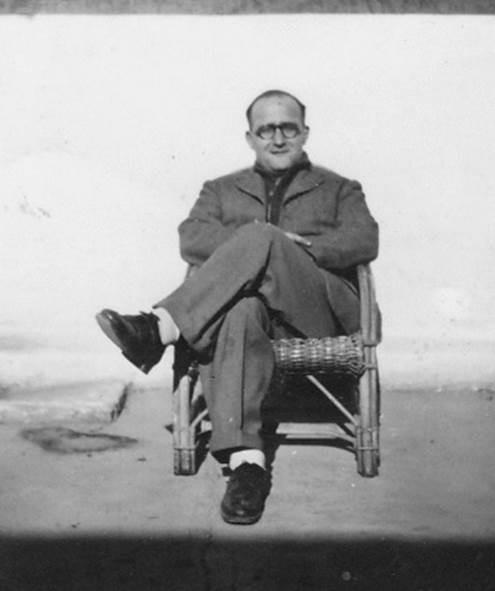Page Green Poets
Poet Jackie Kay and Carol Ann Duffy, her partner at the time and later Poet Laureate, used to live at 20 Townsend Road near Page Green N15. Jackie had already been living in Haringey before their move to this house in 1996. For the two years they were there, both were clearly inspired by their time living in Tottenham. Some of Carol Ann Duffy’s moving poems are about the local area and its history. One talks about the Seven Sisters, and another focuses on the life and legacy of Tottenham’s own Namer of Clouds, Luke Howard.
Jackie Kay shared her own thoughts on living in Tottenham and what made it a unique place to live, when she was photographed by photographer Ingrid Pollard as part of the ‘Re-creating Memories’ exhibition project carried out by Bruce Castle Museum in 1989:
‘One thing I like about living in Haringey is that the people say hello to you in the street. Not like in the big city. Here people know who’s living next door to them. There’s a community feeling. […] Another thing I like about Haringey is that when people object to something they get together, organise a meeting. […] People are politically healthy and get things done.’
Jackie took part in leading poetry events organised by the Haringey Lesbian and Gay Unit during the late 1980s and held in Haringey Libraries.

(Jackie Kay, 1989. From the collections of Bruce Castle Museum and Archive. © photographer Ingrid Pollard. This image forms part of a collection of photographs commissioned as part of the ‘Re-creating Memories’ exhibition project at Bruce Castle Museum in 1989)
Further resources
A Life in Protest: Jackie Kay's response to Ingrid Pollard at Glasgow Women's Library
Community spirit
Wandering around the Page Green area you might chance upon a mural created by the Page Green Residents Association. With ivy hanging around it, you can see it stretching along the garden wall of the end corner house in Pembroke Road – number 31. The mural faces into Wakefield Road.
The mural celebrates Page Green as ‘The bridge for hundreds of years for tens of thousands of immigrants coming to Tottenham with their many talents. Tottenham N15 is the most diverse postcode in Britain’.

(The Mural at Page Green in 2024. From the collections and © Bruce Castle Museum and Archive).
The Women’s Freedom League
On Tuesday 23 March 1909, a ‘Votes For Women’ meeting for the Tottenham branch of the Women’s Freedom League (WFL) was held at Earlsmead School, Tottenham. Until 1907, the WFL had been called the Women’s Social and Political Union. As their new name suggests, it was a democratic organisation that was determined to get votes for women but also to improve the lives and status of women in society generally. They used direct action such as passive resistance to taxation and non-cooperation with the census, rather than attacks on people and property. One known local family who defaced their census return in 1911 as direct action for women’s right to vote were the Fox family in Bruce Castle Road.
The meeting was addressed by two well-known suffrage activists; Australian-born Muriel Matters (1877-1969), famed for chaining herself to the ‘grille’ of the Gallery in the House of Commons which obscured the view for the occupants of the gallery of the parliamentary proceedings; and Maud Mary Arncliffe Sennett (1862 1936), a former actor and a member of the executive committees of the Women's Freedom League, the Hampstead branch of the Women's Social and Political Union (WSPU), and the Actresses' Franchise League, who had been arrested four times for her activism.
All members of the WFL would have received their own membership card – which was printed by W. Conquest & Co., Printers of 99 Tottenham High Road. This firm also printed the Women’s Freedom League’s Votes for Women campaign banners; there is a surviving banner in the House of Commons.
Further resources
You can find out more about the Women’s Freedom League and why they are not more widely known by looking at the Women's Suffarage pages, which includes a podcast by Dr Claire Eustance of Greenwich University:
The Women’s Library at the London School of Economics hosts the Women’s Freedom League Collection.

(Membership card for the Women’s Freedom League that was printed by W. Conquest & Co, the printers of 99 High Road, N15. From the collections and courtesy: The Women’s Library, LSE)
Pre-Raphaelite Sister in Tottenham
On 10 March 1844, Marie Euphrosyne Spartali Stillman was born in Tottenham at Page Green. Marie Spartali's family were Greek - her father Michael and grandfather Demetrius Spartali were both wealthy merchants, who joined fellow Greek businessmen making Tottenham their home in the middle years of the 19th century. The Spartali family lived in Page Green in the 1850s with the 1851 Census giving their address as '16 Page Green'. The house no longer exists but would have been right by where Earlsmead School is today.
Spending her early years in Tottenham and then near St Mary’s Church in Hornsey, Marie grew up to become not only a model for portraits by Pre-Raphaelite artists Dante Gabriel Rossetti and Sir Edward Burne-Jones, but trained to be a painter in her own right. Artistic talent and beauty were definitely family traits, with her cousins Maria Zambaco and Aglaia Ionides also artists. The trio were referred to as “The Three Graces” by their contemporaries.

(Love’s Messenger (1885), Marie Spartali Stillman. Courtesy: Delaware Art Museum)
Marie Spartali Stillman is a Pre-Raphaelite sister who painted some 150 paintings. The largest public collection of her work in the world is in the Delaware Art Museum in the USA. You can also read more about some of her personal items that are also in the museum.
Markfield Beam Engine and Museum
Not far from Page Green, in Markfield Park by the River Lea, is a magnificent hidden gem of industrial heritage: the Grade II listed Markfield Beam Engine and Museum (MBEAM). This working steam-powered beam engine dates from 1888 – a masterpiece of progressive Victorian engineering and design, for most of its life its function was to pump away sewage from Tottenham, thus helping to eradicate dangerous diseases such as cholera in London. The site is a glorious and rare surviving example of industrial heritage, with social and engineering importance. It is well worth a visit to see it steaming today!
Today MBEAM is a free independent museum run by volunteers. It is open on regular Sundays throughout the year – check the opening times.

(Victorian decorative details on the Markfield Beam Engine. From the collections and © Bruce Castle Museum and Archive)
Further resources
Find out more about MBEAM, its history, activities for families and how you can get involved.
Fighting Fascism: Albert Meltzer (1920-1996)
A lifelong anarcho-communist, Meltzer was born in Tottenham and lived for most of his life at 8 Ashby Road in the Page Green and Markfield Road area. He and his family attended the synagogue at 366a Tottenham High Road.
At a very young age Meltzer became an active player in the struggle against fascism. He supported anarchist communes and militias involved in the Spanish Civil War and clashed with Mosley’s fascist Blackshirts during the battle of Cable Street along with many other Tottenham locals Meltzer was involved in anti-Nazi resistance movements before and during the war and renounced his status as conscientious objector when he took part in the Cairo mutiny in the 1940s. He was also unwavering in his support of trade unions.
Meltzer has left behind a significant legacy for the anarchist movement. He founded the Black Cross and the Black Flag newspaper, along with the Kate Sharpley library, described as ‘probably the most comprehensive anarchist archive in Britain’.
Meltzer’s 1996 autobiography, ‘I Couldn’t Paint Golden Angels’, is a personal account of his over 60 years of activism.

(Albert Meltzer pictured in Cairo, 1947. Image © Phil Ruff and courtesy of the Kate Sharpley Library)
Location
Page Green Progressives
Tottenham High Road
Tottenham
N15 4NP
United Kingdom